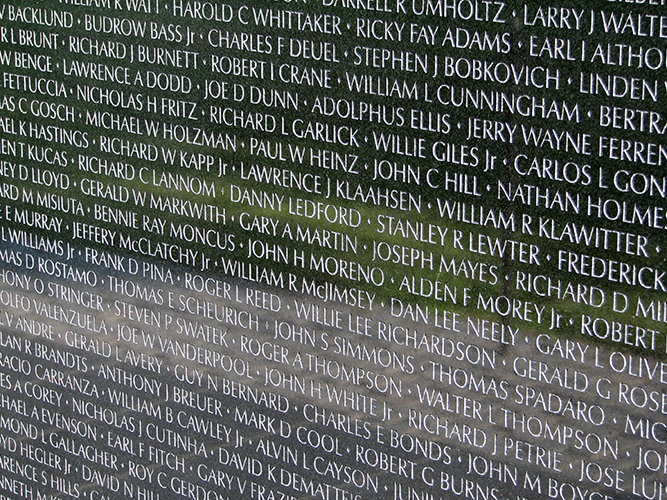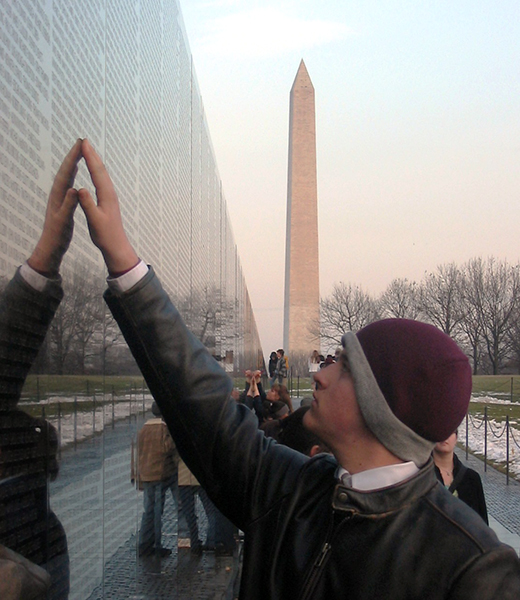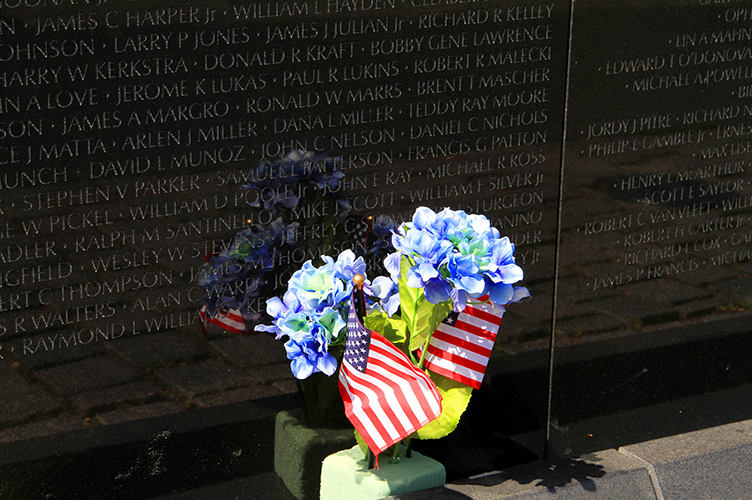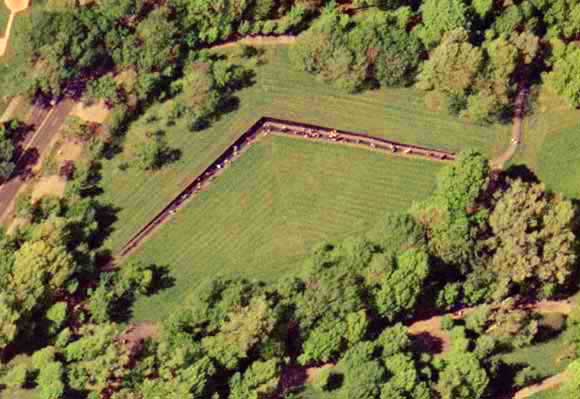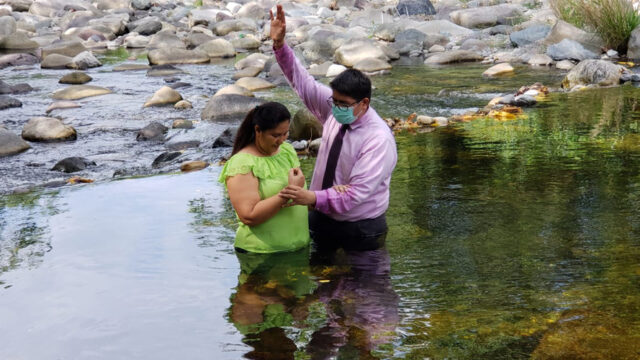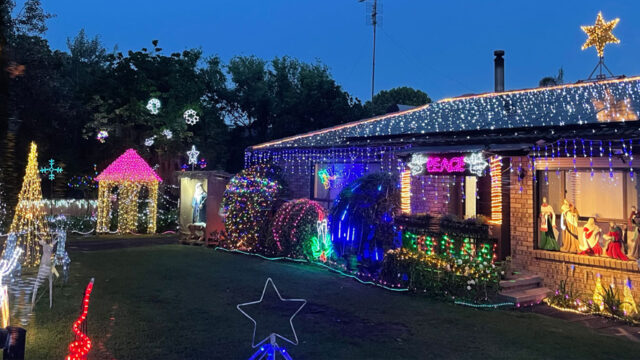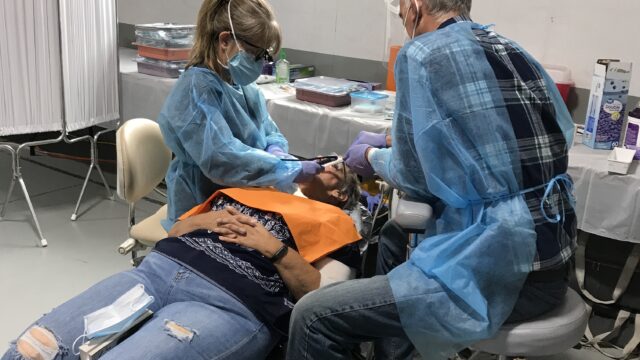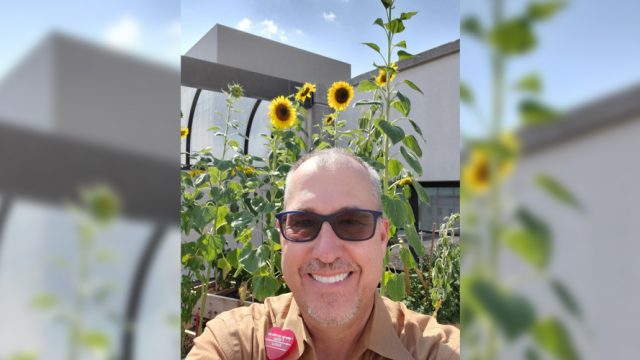A first-ever glimpse of Adventists who died in Vietnam

IF THERE IS A SADDER FILE FOLDER anywhere in Adventism, it’s hard to imagine what it might contain.
In a movement used to celebrating successes—new hospitals, more radio stations, thousands baptized in a day—we find it hard to fully notice facts that go against the stream. But here they are, dozens of official documents, newspaper clippings, and obituary notices that make our losses real.
We look into the confident and steady gaze of handsome young men who are no more; we read the posthumous citations for bravery in battle; we hear the witness of their buddies, the heartbreak of their wives, the stoic grief of parents mourning for their sons.
Something in us doesn’t want to turn the pages, to engage the memories of a bitter conflict about which our collective house is still divided. But 45 years after the last young Seventh-day Adventist soldier died in Vietnam, the church to which they pledged allegiance—from faith, from habit, who knows how?—owes each of them a moment of remembrance.
Assembling the Record
Like so many other things about the Vietnam War, the folder in the archives of the General Conference is unfinished. The latest entry, a cumulative list of Adventist soldiers killed in action, is dated more than two years before the last known Adventist death in Vietnam and 27 months before the negotiated end of hostilities. The reasons for the partial list are unclear: a change in office personnel may have left the unwelcome task of assembling such sadness to someone reluctant to keep up the work.
Across the neat, typewritten list are terse notations from several hands: “Awards: 17 Bronze Stars; 4 Silver Stars; 4 oak-leaf clusters.” “One oak-leaf cluster to TP Md [Takoma Park, Maryland] boy.” Names are added, others deleted, as information is assembled from parents, local church Missionary Volunteer societies, and conference youth directors. Fragments abound: a name only, a name with a date, a name with a hometown. Other listings are more complete and thus verifiable: “Meek, SP4 James, Forest City, Florida, 28 November 1967.”
The 90 names on the church’s list must be set alongside 116 names from the Department of Defense data bank of those who identified themselves as “Adventist” on their military registration. When the two lists are merged and compared with unique names identified in Vietnam-era letters to church headquarters and present-day e-mails (responding to a request in the February 14, 2002, Adventist Review), a clearer picture emerges: At least 148 American Seventh-day Adventist military personnel lost their lives in the Vietnam War, though the actual total is probably higher. As several ex-servicemen have observed, a number of young Adventists probably didn’t identify themselves with their denomination at registration—some because they had made choices about combat participation that the church didn’t recommend, others because they didn’t wish to get a visit from an Adventist military chaplain. Still others chose the broader category of “Protestant” when asked for church affiliation.
An ethic of inclusion must surely guide all efforts to assemble a record of American Adventists who served and died in Vietnam. Some who registered as Adventists may have meant to indicate only the faith they grew up in: for dozens of others, it was clearly a passionate, living experience. Some who practiced Adventism, lived it in the muddy bomb shelters of hilltop outposts, were never baptized or made a public profession. Their letters home give ample evidence, though, that even in a kind of hell unimaginable to most civilians, they sought “a city which hath foundations, whose builder and maker is God” (Heb. 11:10, KJV).
The list assembled and available via the link below,1 apparently the first of its kind in the church’s history, is built on a generous understanding of what makes for an Adventist. Any name identified on government lists, church lists, or from parent and relative sources that can also be found on the official government list of those who died in the war is included. These are also names that can be located on the somber black granite tablets of the Vietnam Veterans Memorial in Washington, D.C.
Group Portrait
No accurate count of Adventists who served in the Vietnam War is known to exist. Church records at the time refer to “thousands” having served. A note for 1967 suggests that some 450 Adventists were in the combat theater; a year later, near the height of the conflict’s intensity, the estimate reached 600. If Adventist participation was comparable to the general U.S. population participation, approximately 5,400 Adventists saw at least one tour of duty there. Anecdotal reports suggest the obvious: as American military involvement in the war dramatically expanded from 1967 to 1970, the number of Adventists known to military chaplains, National Service Organization personnel, and other Adventists grew rapidly.
The number of Adventist fatalities in the war seems modest when compared with the 58,226 names recorded on “The Wall.”2 Yet losses are measured most by their impact on communities of people, and as a percentage of the U.S. Adventist community in 1970, the known 148 fatalities point to a greater and keener sacrifice than was experienced by the general population.3 More Adventists probably either knew or were related to a young man who died in Vietnam than was true for Americans generally.
Information available from government sources provides significant detail about the church members who died. Identification number, branch of service, rank, occupation, age, hometown, birth date, race, marital status, and religion can all be determined, as well as numbers benignly labeled “casualty date”—the date on which these soldiers died.
We learn that the vast majority of Adventists who died served in the Army, almost all as draftees. A small handful spread through the Air Force and the Navy; a larger group enlisted in the Marines. They came from all across America: 36 states, the Virgin Islands, Puerto Rico, and Guam; the home of one Adventist soldier is mysteriously listed as “Jamaica.” California and Florida saw the greatest concentrations of Adventist fatalities, even while the overall East-West geographical distribution was remarkably balanced.
Fifteen percent of those who died (22) were African American. A sizable group of soldiers identified as “Caucasian” bear clearly Hispanic surnames and given names, and would be listed in a separate category in today’s military classification scheme.
Slightly more than a quarter of those who died (38) were married, some for several years, others for just weeks or months. One sees that too-familiar image in the mind’s eye: the crisply dressed officer and chaplain approaching the suburban house, noticing the bright curtains in the living room window and the small American flag on the porch, heavy at the heart for what they must tell a young bride, now a young widow. A few actual photographs of war widows can be found in the church’s archive: most widows are simply listed among “survivors” in obituary notices, between the parents and the siblings.
Forever Young
The serene, clean-shaven faces that stare out at the reader from the obituary notices in the North Pacific Union Gleaner, the Southwestern Union Record, the Southern Tidings, and the Lake Union Herald underscore the painful point: these men were young, some hardly looking old enough to leave home, let alone die for their country. They ranged in age from 18 to 45; the typical Adventist soldier was 22 years old at time of death.
A great and sad “bell curve” can be traced for the years in which they died. The first known Adventist to die, Kenneth Dale Johnston of Pueblo, Colorado, lost his life in a nonhostile air crash on August 27, 1965—just 27 days after going to Vietnam. The last known Adventist fatality—James Lewis Craig, Jr., of Jacksonville, Florida—died when the helicopter he was riding in crashed as a result of enemy fire on October 16, 1972, just three months before the Paris peace accords. In between those points the numbers of young men lost swell and then recede: 1965—2; 1966—10; 1967—33; 1968—41; 1969—33; 1970—16; 1971—8; 1972—4. One Adventist Air Force officer, missing in action for more than 12 years, was declared a casualty in 1978.
The records sometimes tell too much: a 33-year-old Adventist Army sergeant, killed on his first full day in Vietnam. Numerous other names appear who died in the first month of combat duty. Others were within days of finishing their tour when the mortar, the Claymore mine, or the enemy sniper put their name on the casualty list. Among the Adventist soldiers who died in Vietnam, the average length of tour was 151 days—slightly less than five months.
Hands Off—or On?—the Gun
The most publicly conspicuous feature of Adventist participation in the Vietnam War was the noncombatant “conscientious objector” status claimed by many who were drafted. (Some soldiers and church leaders, concerned about popular images of war protestors, preferred the term “conscientious cooperator.”) Dozens, probably even hundreds, of local newspaper accounts throughout the United States during the Vietnam War years glowingly described these “soldiers without guns,” and a 1968 volume about Adventist soldiers in Vietnam (No Guns on Their Shoulders, by Herbert Ford) celebrated only the stories of those who chose to follow the church’s official recommendation about not carrying weapons.
Adventists had struggled with the U.S. government for a century—since the Civil War—to achieve official status as “conscientious objectors”—persons opposed to bearing arms in combat, but willing to participate, usually as medical personnel, in efforts to save lives on the battlefield. Some Adventist soldiers in World Wars I and II were court-martialed for their principled refusal to carry arms or do nonlifesaving work on the Sabbath. By the time of the Korean conflict (1950-1953), the rights of Adventists as noncombatants had been assured by presidential directive, and thousands of Adventists drafted into the Army during the Vietnam War claimed the status available to them. All Adventists who claimed 1-A-O status were placed in the Army; noncombat status was not generally available in the other military branches. Their basic training, usually at Fort Sam Houston, differed from that of their weapon-carrying peers. As noted in another Adventist Review story (“A Coat of Many Colors,” Sept. 24, 1998), hundreds from this group volunteered and served in the Army’s Whitecoat project at Fort Detrick, Maryland, during the Vietnam era.
The national debate about U.S. policy in Vietnam during the 1960s also produced another kind of Adventist conscientious objector, one who believed that they could not participate in the U.S. military effort in any way, even as a battlefield medic. Church leaders struggled to maintain the government status already achieved while also affirming the antiwar choices of individual young men. Late in the Vietnam War, at the General Conference Autumn Council of 1972, church leaders voted a policy that, while recommending noncombatant participation, also affirmed church support for those who felt they could not conscientiously serve at all. A consequence of this action was an extension of church support to those who chose to carry weapons as well. The church clearly had a recommended course of action, but it offered its support to those draftees and enlisted men who made other choices about combat.
Choices
The record of Adventist medics and other noncombatant participants in Vietnam is impressive: another folder in the General Conference archives lists dozens of military citations and awards given for heroic service on the battlefield and identifies many Adventists as recipients of the Purple Heart award for battlefield wounds. Newspaper clippings mount up with amazing stories of medics, often wounded, risking their lives to save men in their unit while under deadly enemy fire. None should doubt the heroism of hundreds of young Adventists who faced the most frightening time of their lives armed only with bandages, a field medical kit, and faith in the will of God. As one highly decorated Adventist medic summarized his belief: “One thing I’ve found is you never have to worry about Jesus jamming on you like an M-16.”4 Of these medical personnel, 52 lost their lives in combat.
But many other young Adventists who died in Vietnam made other choices about carrying weapons, as revealed by the Military Occupation Specialty (MOS) codes attached to their record. While medics are the largest single group among the known 148 fatalities, the sizeable number of Adventist names in the regular infantry and Marines suggest many men who chose to carry weapons on either a regular or exceptional basis. Noncombat status was almost never available to soldiers in those areas of service. Forty-three Adventist deaths among regular infantry and another 17 from the Marines indicate that many young men either didn’t agree with the church’s official recommendation or felt that carrying a weapon was crucial to their hope of surviving the war.
One Medic’s Story
Specialist Five James Oliver, a conscientious objector serving as a medic, well illustrates the moral dilemma faced by Adventist soldiers in Vietnam. Pinned down in a firefight near Kontum by a sniper while trying to help a wounded American paratrooper, Oliver watched helplessly as the sniper killed another wounded man who was waiting to be airlifted out by helicopter.
“There wasn’t anything else I could do,” Oliver told an Army reporter. “I saw the sniper, picked up an M-16 off the ground, sighted, and fired once.” Oliver’s shot knocked the sniper out of his tree. “I hope I don’t have to do it again,” the medic said, “but if I must, I will.”5
Other Adventist men, faced with equally terrible situations, chose differently from Oliver: some no doubt gave their lives through their principled refusal to pick up a weapon in either self-defense or to protect their buddies.
What emerges from both the data and the numerous heartbreaking stories is the need for a greater charity toward all Adventists who served and died in Vietnam. That some died while carrying weapons should not suggest that they were second-class Adventists. That others gave up their lives rather than defend themselves should mark them as neither foolish nor, alternatively, as a better kind of believer. The finely tuned ethical sensitivities of the classroom and the Sabbath School fade away in the presence of the real-life horror faced by thousands of young Adventists in the jungles and on the hilltops of Vietnam.
Why We Create Memorials
I live just minutes from Washington, D.C. I previously attended classes at a university just blocks from the site of the Vietnam Veterans Memorial. Each time I passed by, I noted the never-ending stream of persons moving slowly past the thousands of names; the dozens of cards and floral tributes left by surviving family and friends; the men and women, the children, the siblings, the parents who have discovered a sacred spot where they can weep if they want and no one will tell them to get over it.
Chamber of Commerce types inform us that “The Wall” is now the most frequently visited site in a city full of memorials to dead heroes. It seems to have achieved an ageless, nonpolitical status: both supporters and those who protested the war in Vietnam come here to talk and think and pray.
But it was not always so. The origins of “The Wall” were steeped in controversy and litigation, as is the current plan to build a memorial a quarter mile away to honor all Americans who served in World War II. The act of building a memorial—or printing one—inevitably arouses emotions some would rather leave alone. But memorials, if we allow them to, take us past the piercing hurt—of assassination, of catastrophe, of losing those we love in war—and help us find a greater, calmer meaning than the sharpness of our grief.
There will undoubtedly be those who think the Adventist memorial6 a foolish waste of precious space, an unnecessary evocation of a war and a time that is better forgotten. Others will wish that even more was here, that some new category—Adventists wounded in Vietnam, for instance—was given equal treatment. And some, perhaps most, may find in these records, pictures, and names a sense of somehow coming full circle.
A generation ago, we heralded these young men going out as Adventists and soldiers. Now, sadder and wiser, we remember them—all of them—as both.
Each May since moving to this region, my family and I have attended the annual Memorial Day concert on the west side of the U.S. Capitol or else watched the broadcast on public television. Of all the sights and sounds my wife and I gladly shared with our sons each year when they were young is one that never ceases to amaze and move me.
Between the songs, the military bands, the well-scripted narration of servicemen’s letters, there’s a moment when a lone bugler directly up against the face of the Capitol plays “Taps.” Thousands of people stand silently, swallowing hard, remembering.
This year, when the tears again come to my eyes, they will be for the dozens of young Adventist men who a generation ago paid a price I pray my sons will never have to pay.
Forty-five years later, with all my heart, I salute them.
1 https://www.adventistreview.org/archives/2002-1521/story1-2.html
2 Most U.S. residents are unaware that some thousands of Canadian citizens served alongside U.S. troops in Vietnam, even while Canada remained officially neutral in the conflict. Canadian government records officially list 93 as killed in action and another seven as missing in action. No information is known to exist as to whether any Adventists are included in this number.
3 The percentages are .035 to .028. Adventist population in the United States in 1970 was approximately 410,000; the U.S. population in the 1970 census was 203,302,031.
4 Letter of David Chedester to Clark Smith, Oct. 12, 1968, archives, General Conference of Seventh-day Adventists.
5 “What Else Could I Do?” in Fire Base 173, NSO Folder 124, archives, General Conference of Seventh-day Adventists.
6 https://www.adventistreview.org/archives/2002-1521/story1-2.html


